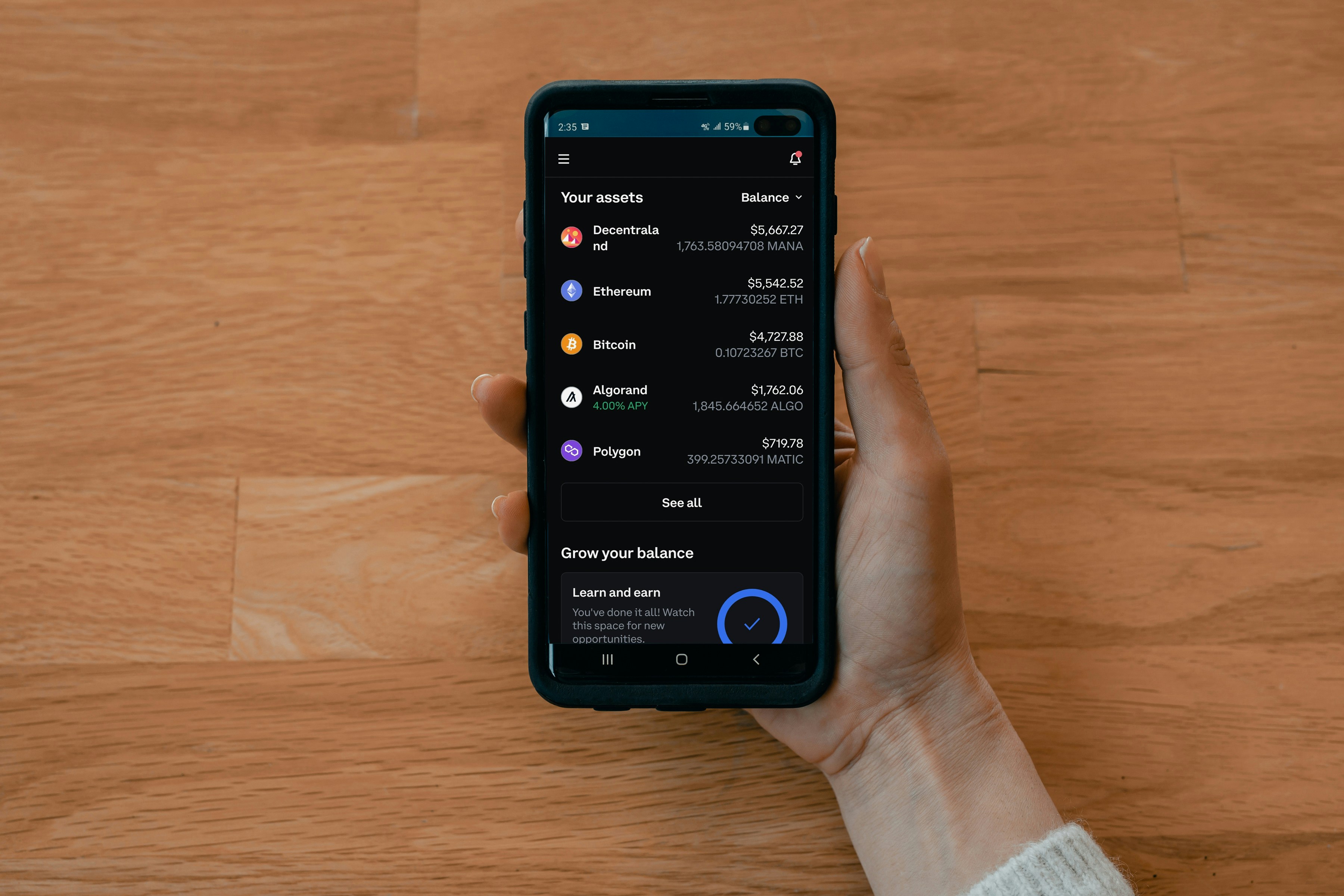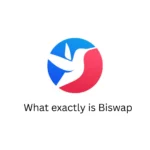
Introduction to Play-to-Earn Games
The advent of digital technology has radically transformed the landscape of gaming, giving rise to innovative models such as play-to-earn (P2E) games. These games empower players to not only engage in immersive gameplay but also generate real-world value through the acquisition of cryptocurrencies or digital assets. The P2E paradigm harnesses blockchain technology, which underpins the security and transparency of transactions within the gaming ecosystem. This remarkable integration has contributed significantly to their growing appeal.
Traditionally, gaming was perceived as a purely recreational activity with no direct financial incentives. However, the introduction of P2E mechanics has reshaped perceptions, allowing players to earn while they play. This model provides gamers with opportunities to monetize their skills and time, transforming the gaming experience into an economic one. As blockchain technology has matured, the gaming industry has witnessed an influx of P2E platforms that reward players for their contributions, enhancing engagement and community involvement.
The rise of cryptocurrencies has further accelerated the popularity of P2E games. Players can earn tokens that may appreciate in value or be exchanged for other cryptocurrencies, creating a fluid, decentralized economy within gaming. In recent years, various P2E platforms have launched, facilitating a new form of digital ownership where in-game assets are verifiable and can be bought or sold outside traditional game boundaries. This has led to innovative gameplay mechanics and unique user experiences that attract a diverse player base. As technology continues to evolve, the future of P2E games looks promising, paving the way for even more engaging and rewarding gaming experiences.
Axie Infinity
Axie Infinity has emerged as a lightweight yet powerful player in the realm of play-to-earn (P2E) gaming, capturing the attention of gamers and crypto enthusiasts alike. This innovative game is built around a unique ecosystem where players can breed, raise, battle, and trade virtual creatures known as Axies. Each Axie functions as a non-fungible token (NFT), ensuring that players have tangible ownership over their digital assets, which plays a significant role in the game’s appeal.
The gameplay mechanics of Axie Infinity are designed to be engaging and multifaceted. Players start by acquiring three Axies to form their team, which they can use to compete in battles against other players. The outcome of these battles is influenced by the choice of Axies and their individual stats, as well as strategic decision-making during the fight. This competitive element taps into the overlapping interests of gamers and collectors, incentivizing players to improve their skills and develop powerful Axies.
One of the standout features of Axie Infinity is the breeding mechanic, which allows players to create new Axies by combining the traits of their existing creatures. Each Axie has distinct genetic codes that determine its characteristics, making the breeding process a critical aspect for collectors and gamers aspiring to create rare and valuable Axies. Moreover, the ability to trade Axies on various marketplaces adds an exciting layer of economic strategy, as players seek to acquire rarer creatures and increase their investment potential.
The gaming community surrounding Axie Infinity is also noteworthy. Players from around the globe engage with each other, sharing strategies and successes while forming guilds to enhance their gameplay experience. This vibrant community, coupled with the game’s earning potential through activities such as battles and trading, positions Axie Infinity as an alluring option for those looking to earn crypto in a fun and interactive way.
Decentraland
Decentraland is a leading virtual reality platform that empowers users to create, explore, and monetize their own content and applications. Built on the Ethereum blockchain, Decentraland provides a decentralized framework that allows individuals to have ownership over their creations and virtual assets. The platform’s economy is primarily driven by its native cryptocurrency, MANA, which users can earn in various innovative ways.
One of the most significant avenues for income within Decentraland is through the buying, developing, and selling of virtual real estate. Users can purchase parcels of land, which they can then build upon to create interactive experiences, ranging from games to art galleries and social spaces. As the demand for virtual real estate continues to increase, savvy investors can benefit from significant returns on their initial purchases through strategic development and sales.
Moreover, Decentraland offers users the opportunity to create unique experiences that engage the community. Developers can code interactive experiences using the Decentraland SDK, allowing for the incorporation of gamification elements and diverse content offerings. Hosting events, whether they are virtual concerts, art exhibitions, or educational workshops, also enables users to draw crowds and generate revenue from ticket sales or sponsorships.
The social aspect of Decentraland cannot be overlooked. Users engage with each other in this dynamic virtual environment, fostering a sense of community. Participating in social events and collaborating with other creators not only enhances the user experience but also opens new pathways for income generation through networking and partnership opportunities. As the landscape of virtual reality continues to evolve, Decentraland stands at the forefront, offering new ways for individuals to engage and monetize their creativity in an immersive digital environment.
The Sandbox
The Sandbox is an innovative user-generated content platform that has established itself as a leader in the play-to-earn (P2E) gaming landscape. It allows players to create, own, and monetize their gaming experiences through the integration of blockchain technology. At its core, The Sandbox provides a virtual environment where users can design games and digital assets, establishing a unique marketplace for game developers and players alike.
Asset creation is a fundamental feature of The Sandbox, empowering users to craft a wide range of digital assets, such as characters, buildings, and interactive objects, using intuitive design tools. By utilizing the VoxEdit tool, players can create voxel-based assets that can be traded or sold on the platform. These assets not only serve as valuable components within their games but can also generate income when sold to other players in the marketplace, thus enhancing the earning potential within the ecosystem.
Another critical aspect of The Sandbox is land ownership. Players can purchase virtual real estate in the form of lands, represented as non-fungible tokens (NFTs) on the blockchain. This land can be developed into various gaming experiences, experiences thus allowing for the integration of user-generated content. Owners can lease their properties, host events, or create their games, providing multiple avenues for generating cryptocurrency revenue.
Furthermore, The Sandbox has maintained its edge in the P2E space through strategic partnerships and collaborations with various brands and creators. This engagement fosters a vibrant community that attracts players and developers eager to explore and monetize their creative ideas. As 2025 approaches, The Sandbox continues to highlight the potential of user-generated content and the play-to-earn experience, thereby redefining how players interact with video games and earn cryptocurrency.
4. Splinterlands
Splinterlands is an innovative digital trading card game that combines strategic deck building and competitive gameplay within the realm of blockchain technology. Players engage in battles using unique cards that represent various characters and abilities, creating a dynamic and engaging experience. Each card possesses its own set of attributes, including attack power, defense, and special effects. This intricate system allows players to devise strategies that can turn the tide of battle, enhancing their tactical acumen as they engage with opponents.
One of the primary mechanics in Splinterlands is deck building, where players curate a collection of cards to form a formidable team. Players must consider several factors while assembling their decks, including the strengths and weaknesses of available cards, the synergy between different characters, and the specific rules of each match. This aspect encourages a diverse range of strategies among the player base, making each game session unique. Additionally, the game regularly introduces new cards and expansions, thereby ensuring that the gameplay remains fresh and engaging for both new and returning players.
Competitive play is further bolstered by the existence of tournaments within Splinterlands, where players can showcase their skills against top opponents for the chance to win significant in-game rewards. These tournaments often feature varying rules and formats, which can cater to players of differing skill levels and play styles. Furthermore, Splinterlands provides players with opportunities to earn cryptocurrency through card trading and accumulating rewards from matches. Players can buy, sell, and trade cards on the marketplace, thus transforming their in-game achievements into tangible assets. As a prominent player in the P2E (Play-to-Earn) landscape, Splinterlands exemplifies the potential for earning crypto through engaging gameplay and strategic involvement.
Guild of Guardians
Guild of Guardians is an innovative mobile role-playing game (RPG) that exemplifies the integration of traditional gaming and blockchain technology. It offers players a unique opportunity to engage in immersive gameplay while participating in a vibrant ecosystem where they can earn cryptocurrency. The game revolves around the concept of hero collection, where players can gather a diverse cast of characters, each with distinctive abilities and attributes. This aspect not only enhances the gameplay experience but also allows players to strategize efficiently to conquer various challenges within the game.
Another noteworthy feature of Guild of Guardians is its emphasis on guild participation. Players can create or join guilds, fostering a sense of community and cooperation among members. Guilds play a pivotal role in the game, as they enable players to collaborate on missions, share resources, and engage in competitive events. This cooperative gameplay structure enriches the overall experience, as team dynamics become essential to achieving collective goals, ultimately resulting in stronger representations in the game world.
Furthermore, Guild of Guardians incorporates multiple mechanics that facilitate the earning of crypto rewards. As players progress through the game, they can earn in-game tokens through various actions, such as completing quests, defeating enemies, and contributing to their guild’s success. These tokens can be exchanged for cryptocurrency, providing players with tangible financial incentives for their time and effort invested in the game. This innovative approach to gameplay not only enriches the gaming experience but also aligns with the growing trend of play-to-earn models, making Guild of Guardians a significant player in the P2E landscape as we look toward 2025.
6. Illuvium
Illuvium represents a groundbreaking entry in the realm of Play-to-Earn (P2E) games, merging expansive open-world exploration with compelling role-playing elements in a visually stunning sci-fi universe. This innovative game offers players the unique opportunity to immerse themselves in its rich narrative while engaging with a vibrant ecosystem of creatures known as Illuvials. Players can capture, train, and battle these creatures, which adds a layer of strategy and excitement that is critical to the gameplay experience.
One of the distinguishing features of Illuvium is its focus on exploration. Players traverse diverse landscapes, each uniquely characterized by distinct environments and ecosystems. This not only enhances the gaming experience but also provides players with numerous opportunities to discover rare Illuvials and valuable resources. The element of discovery fosters a sense of adventure, enticing players to delve deeper into the game.
Furthermore, Illuvium integrates a range of competitive features, such as tournaments, which promote player engagement and skill enhancement. Competing in these tournaments allows players to earn crypto rewards based on their performance. This direct connection between gameplay and real-world earnings exemplifies the potential benefits of participating in P2E games. The game’s economy is designed to reward strategic gameplay and in-game achievements, encouraging players to invest time and effort into honing their skills.
In addition to competition, the game’s development team is committed to continually expanding its content offerings, ensuring an evolved and enriched player experience. With upcoming updates and new features, the potential for earning crypto through engaging, immersive gameplay remains promising. By combining exploration, creature capturing, and competitive battles, Illuvium exemplifies the future of P2E games, making it a noteworthy contender in the 2025 gaming landscape.
Key Takeaways
The Play-to-Earn (P2E) gaming model has rapidly gained traction, attracting a diverse audience of players and investors alike. One of the primary reasons for the increasing popularity of these games is the financial incentive they provide. By allowing players to earn cryptocurrency through gameplay, P2E games enable users to monetize their skills and time, transforming leisure activities into viable income streams. This financial aspect has been a significant driving force behind the expansion of the P2E ecosystem.
Another key factor contributing to the popularity of P2E games is their vibrant community dynamics. Many of these games foster collaborative and competitive environments where players can engage, share strategies, and form lasting alliances. Communities built around P2E games often create strong social bonds, leading to increased player retention and further investment in the game. Players tend to feel a sense of belonging, which bolsters their commitment to the game and enhances overall enjoyment.
In addition to financial rewards and community engagement, innovative gameplay experiences have also played a crucial role in the success of P2E games. Developers are continuously pushing the boundaries of creativity, introducing unique mechanics that captivate players. By incorporating elements such as decentralization, virtual ownership, and interactive storytelling, P2E games provide an immersive experience that goes beyond traditional gaming. These innovative features appeal to both gamers and investors, as highly engaging gameplay can lead to sustained player interest and potential long-term investment in digital assets.
Lastly, the potential for long-term investment in virtual assets cannot be overlooked. As the P2E landscape evolves, players recognize the opportunity to acquire in-game items or properties that can appreciate over time. This aspect enhances the overall value proposition, making P2E games an attractive option for individuals interested in combining entertainment with investment. The combination of financial incentives, vibrant community interactions, innovative gameplay, and investment potential positions P2E games favorably in the rapidly changing gaming market.
Frequently Asked Questions (FAQ)
Play-to-earn (P2E) games have revolutionized the gaming industry by allowing players to earn cryptocurrency and other digital assets while engaging in gameplay. These games utilize blockchain technology to create an economy where players can trade, sell, and own in-game items as non-fungible tokens (NFTs). Unlike traditional gaming, where player efforts do not translate into monetary value, P2E games provide tangible rewards for participating in various gaming activities, including completing tasks, winning matches, or achieving milestones.
To start earning crypto in P2E games, players typically need to follow a few straightforward steps. First, one must select a game that interests them, ensuring it has a clear earning mechanism and a supportive community. Registration is usually simple, often requiring players to create an account and connect a digital wallet to facilitate transactions. It’s important to familiarize oneself with the game’s rules and the type of cryptocurrency used within its ecosystem. Engaging actively in the game allows players to cultivate skills and build their assets, gradually increasing their potential earnings.
The question of whether P2E games are worth the investment often arises, particularly for newcomers. Like any investment, the financial potential varies based on several factors, including the game’s market demand, the player’s dedication, and the inherent risks. While many players have successfully monetized their gaming experiences, others may encounter challenges, such as fluctuating cryptocurrency values or game sustainability. Conducting thorough research and assessing personal goals and risk tolerance is essential before diving into the P2E space. Ultimately, the gaming experience should also be enjoyable, irrespective of the financial rewards.
Conclusion
In recent years, the play-to-earn (P2E) gaming model has gained remarkable traction, fundamentally altering both the gaming industry and investment landscapes. By allowing players to earn cryptocurrency through gameplay, these innovative platforms provide not only entertainment but also economic opportunity. As we look ahead to 2025, the evolution of P2E games is poised to revolutionize how individuals perceive both gaming and cryptocurrency investment.
The highlighted titles each present unique mechanisms and opportunities, making them appealing to a wide range of players. From enhanced gaming experiences to the potential for real-world financial gains, the P2E ecosystem is enticing and offers a glimpse into the future of interactive entertainment. By engaging with these games, players can merge leisure activities with financial incentives, creating a dual-layered experience that is reshaping traditional gaming paradigms.
Moreover, the expanding adoption of blockchain technology suggests that P2E games will continue to gain momentum, enabling players to cultivate skills that directly translate into monetary value. As the infrastructure surrounding digital currencies strengthens, the potential for P2E platforms to further embed themselves into mainstream gaming cannot be overstated. Investors and gamers alike should consider exploring the options provided by these games, as they are at the forefront of this dynamic shift.
Ultimately, the significance of play-to-earn games in the broader context of gaming and finance illustrates an intriguing intersection of technology and economics. Whether through active participation or investment, individuals have an exciting opportunity to immerse themselves in a rapidly growing ecosystem that marries entertainment with innovation. The future of play-to-earn gaming is bright, and participating in this space may prove to be a rewarding endeavor for both gamers and investors in the coming years.



